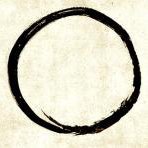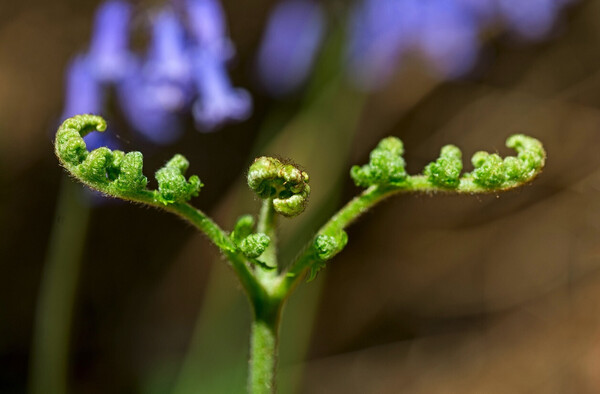-
Posts
409 -
Joined
-
Last visited
-
Days Won
1
Content Type
Profiles
Forums
Events
Store
Downloads
Gallery
Everything posted by FlorianB
-
My first impression was later Akasaka, because of the design and the different sized hitsu-ana, but as said above Higo could also be a possibility. Here’s a similar Nishigaki of mine: Are there any signs of sanmai awase on the outer rim or inner sides? Florian
-
Glen, exactly this part at the edge looked sightly splintered so I thought of lacquer. Thanks for clearing up! Concerning the time: Although that’s not out of question I want to remind that the lack of signs of wear at the nakago-ana or the seppa-dai not necessarily hint to Meiji or more recent periods, because since the 18th century Tsuba have been bought as gifts, souvenirs or collectibles without the intention of using them. Best, Florian
-
Hi, difficult to tell, if the nunome belongs to an originaI concept or was added later. Here we have a later piece which shows some „mannerism“, in my eyes a touch to much. Concerning the time a hint could be the niku, the concave or convex surface. If a Tsuba shows naka-daka, i.e. disc-shape (thicker in the middle, thinner at the rim) it is not earlier than Edo-period. Best, Florian
-
Hi Vitaly, I think all these Tsuba have been made during the Edo-period. It seems to me that the second Tsuba is lacquered. Such a rough lacquer structure was popular in the latter Edo-times. Here’s an example: That’s the reason it has a fukurin, a separate ring for stabilization. The Kamon-Tsuba shows some cloudy parts on the surface around the inlays as if someone polished those and abraded the patina, too. Gold needs no polish so I persume the inlays are made of brass (sentoku). The small ornaments are called karakusa or arabesque. The last one has nunome of gold and obviously lead. Can’t imagine the design but it seems intenionally worn out maybe to allude to transciency. Best, Florian
-
Chris, the term warabite (i.e. young bracken sprouts) is used on different designs as a convention. Your example could be claimed warabite, personally I would prefer karakusa (arabesque). Fern sprouts in nature look like these: Some warabite designs taken from an old book with patterns of cloth: Here’s a Tsuba of mine, note the different number of forks: This vertical beam with rounded tips is also called warabite: And some other examples from tsuba.info (https://tsuba.info/higo/) with warabite design (or drawer handles on the left, temple gong on the right side...): Best, Florian .
-
No point to get confused. I like those stylized designs, because there are different interpretations possible. Which is right, which is wrong? At least it doesn’t matter because today we can only speculate about the maker’s intention. Try some research on the suggestions above and find the answer by yourself. BTW my Kiri leaf/seedling proposal is a nice idea, but it doesn’t correspond to Japanese iconography. Meanwhile I think about matsukawabishi and warabite, often found on Shoami Tsuba - sorry to confuse You even more! Best, Florian
-
Possibly. At least every sukashi could be used as udenuki-ana... My recommendation to Okan (?): Research Tosho- and Katchushi Tsuba to get a feeling for the simplified or abstract designs. Maybe You get the answer by yourself. Florian
-
That’s the design I reminded. Another one here with peaky leaves: copied from this site: https://tosogucollection.wordpress.com/2014/05/12/iron-tsuba-with-design-of-paulownia-leaves/ Akasaka and Higo often produced similar designs. However, this means Kiri leaves AND warabite? Or another proposal: kiri leaves and kiri seedlings like this one: It is said, it is a very fast growing tree. Florian
-
The jagged leaves reminded me first of kiri-leaves sometimes made by Akasaka, but the shoots won't fit. So at least I agree with the fern option. Florian
-
I vote for some kind of insect, a bug or a butterfly. Florian
-
Something else to think about - I've seen some kind of soft-coral from southern Japan. I'm not a coral expert, but a research on this topic might be helpful. Best, Florian
-
Concerning the second one in question I found a similar one here: https://soryu.pl/collections/tsuba/products/kanayama-tsuba-with-nbthk-hozon-tosogu-cross-and-wild-geese BTW the term "cross" is not necessarily connected with a christian cross. Florian
-
So at least some more shots in an angular view would be helpful so we could see the rim and the inner sides of the sukashi. Florian
-
Agreed, Dale! Alas we can only judge by images. It’ll become clearer holding those pieces in hand. As I mentioned above the large seppa-dai on Dan’s Tsuba seems a clue to Shoami. Concerning the karigane it is said Owari often made curled wings, Shoami wings are slightly bend. Florian
-
Dale, actually it is the first I see with mokko-gata. Thanks for posting. The Akasaka attribution is encircled: BTW, the rusty one on the Japanese sales page is described as "Ko Shoami". Florian
-
Hello Dan, it looks not like Akasaka. As far as I remember they never made mokko-gata. Large seppa-dai and the symmetrical design - in my opinion here we have Shoami again, probably Edo because of the lack of displacement of centre lines. Best, Florian
-
Hi, thickness and a small, pointed seppadai alone aren’t sufficent for a Ko-Akasaka attribution. Not even the size but also the shape of the hitsu ana are non-typical. In general I can’t see even Akasaka here. Concerning the motif there are different leaves depicted, at the bottom maybe myoga, the sharp angeled sukashi elements could be broken bamboo stems, at the top juzuba, a buddhist rosary. Just a quick shot in the dark. A look at Japanese heraldy (kamon) is often helpful for identifying stylised design. Best, Florian
-
Looks like an old Tokubetsu Kicho paper (replaced by Hozon paper in 1982). Example with explanation here: http://www.nihontocraft.com/japanese_sword_papers.html Best, Florian
-
Ed, In my view the surface structure is result of corrosion. It seems that parts are laquered? Those tagane on the back in groups of five could be found on Shoami and Kanayama pieces, neatly done here. Similar to one of mine: Dimensions could help to pin down the origin, but Shoami seems most likely. Florian
-
Sure it's painted? Looks more like a plastic label with a number on it... Florian
-
An old thread with similar examples: Best, Florian
-
Hi, the lower motif in question shows gourds. Alas, the condition isn't the best. Concerning the signatures on Kogatana there are some which certainly are genuine (and thus made by the named smith), but in many cases these designations just refer to a well known smith. Best, Florian

















